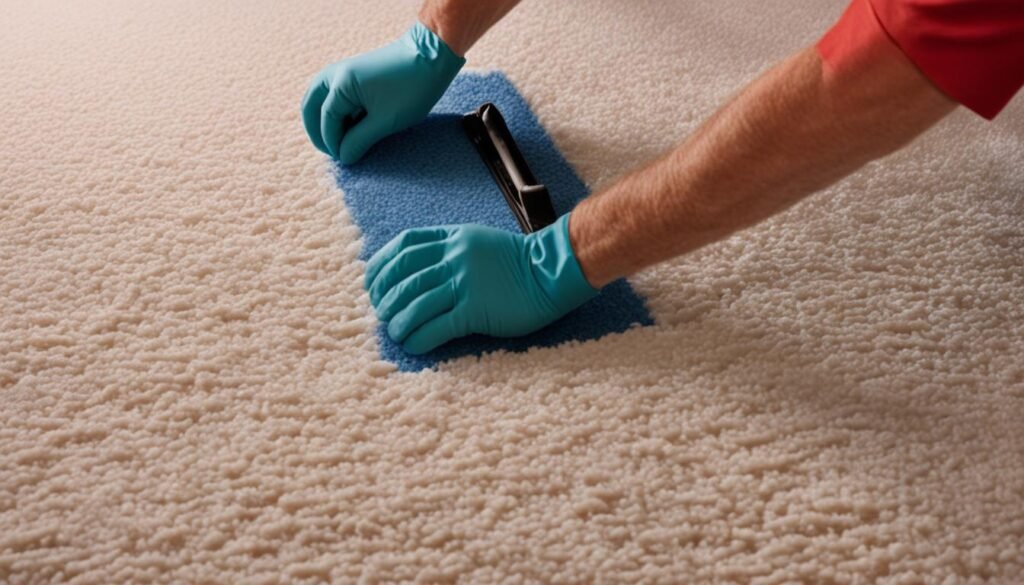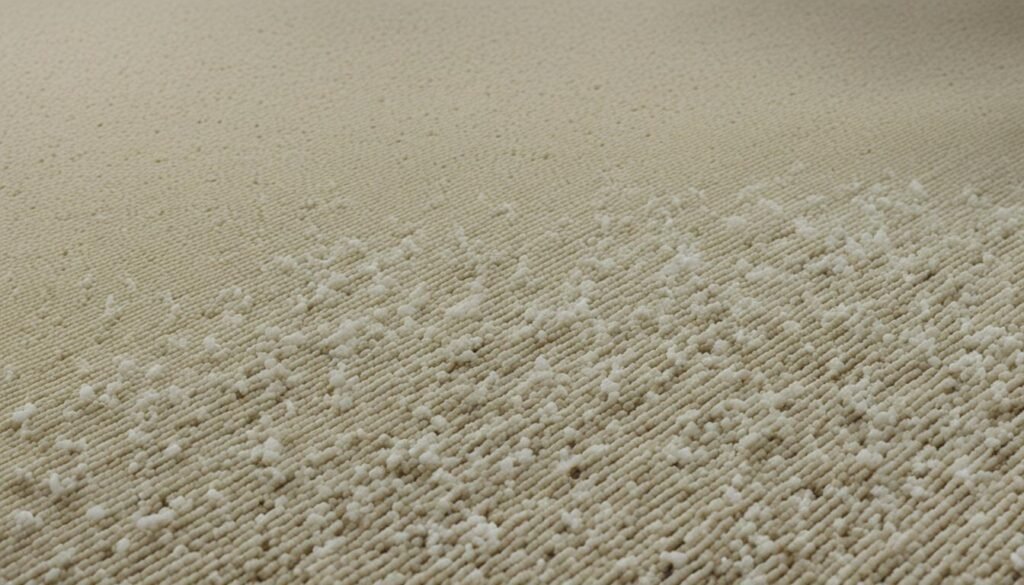Water damage hits over 14 million American homes every year. Carpets are often the first to suffer. It’s crucial to clean and restore your carpet after water damage to avoid mold and costly replacements. This guide will show you how to fix water damage and make your carpet look new again.
Key Takeaways
- Understand the causes and signs of water damage on carpets to address the problem effectively.
- Follow a step-by-step guide to properly clean, dry, and restore water-damaged carpets.
- Explore options for preventing future water damage, such as water-resistant carpets and professional restoration services.
- Learn how to file insurance claims for water-damaged carpets to recoup the costs of repair or replacement.
- Consult with local experts like FloodFixers for professional carpet water damage restoration in Moreno Valley, CA.
Understanding Water Damage on Carpets
Carpets can face different kinds of water damage, each with its own causes and effects. It’s important to know where these damages come from and how they affect your carpet. This knowledge helps in fixing and preventing future problems with your carpet.
Causes of Water-Damaged Carpets
Here are the main reasons why carpets get water damage:
- Clean Water Damage: This happens from clean water like rain, broken appliances, or leaks.
- Greywater Damage: This comes from greywater, which includes dishwasher or toilet overflows, and can harm the carpet.
- Blackwater Damage: The worst kind, blackwater damage, is from sewer backups and can be dangerous to health.
- Gradual Leaks: Carpets can also get damaged by slow leaks that are not easily seen.
Signs of Water Damage on Carpets
Spotting water damage early is key to acting fast and stopping more damage. Look out for these signs:
- A soggy or damp feel underfoot
- Visible wrinkling or puckering of the carpet surface
- Discoloration and fading of the carpet fibers
- An unpleasant musty odor
These signs mean your carpet has been wet and could grow mold if not fixed. Fixing water damage on carpets fast is crucial to avoid health risks and keep your flooring in good shape.
| Causes of Water Damage on Carpets | Characteristics |
|---|---|
| Clean Water Damage | Caused by clean water sources like rainwater, malfunctioning appliances, or broken water lines |
| Greywater Damage | Originates from sources like dishwasher discharges or toilet overflows, containing contaminants |
| Blackwater Damage | The most severe type, stemming from sewer backups and carrying hazardous substances |
| Gradual Leaks | Constant seepage under the carpet surface, often going unnoticed for extended periods |
“Addressing water damage on carpets quickly is essential to mitigate potential health hazards and preserve the integrity of your flooring.”
water damage on carpet how to fix
Water damage on your carpet can seem overwhelming, but you can fix it with the right steps. This guide will help you deal with water damage on your carpet, whether it’s a clean spill or a bigger issue.
Step-by-Step Guide for Clean Water Damage
For clean water spills, like a burst pipe or overflowing bathtub, you can fix it yourself. Here’s what to do:
- Stop the leak: Find and fix the water source to prevent more damage.
- Remove water: Use towels or a wet-dry vacuum to dry up as much water as you can.
- Take out the wet carpet: Carefully remove the damp carpet and throw away the wet padding.
- Dry the area: Put the carpet back up and use fans, dehumidifiers, and heaters to dry it completely. This might take 12 hours or more.
- Check the carpet: Make sure the carpet is dry before moving on.
- Patch the carpet: If needed, fix any damaged carpet spots with a repair kit or professional help.
- Put back the furniture: Once the area is dry, you can put back any furniture you moved.
By following these steps, you can fix clean water damage on your carpet. This helps avoid mold or mildew problems later.
| Technique | Description | Effectiveness |
|---|---|---|
| Carpet water extraction | Using powerful vacuums to remove standing water from the carpet. | Highly effective for clean water spills. |
| Carpet drying techniques | Using fans, dehumidifiers, and heaters to dry the area well. | Important to stop mold and mildew. |
| Carpet cleaning after water damage | Cleaning the carpet well to get rid of dirt or contaminants left behind. | Helps make the carpet look good again and prevents future problems. |
If the damage is big or involves dirty water, call a professional carpet restoration company like FloodFixers for help.

“Quick and effective action is key to prevent mold and mildew after water damage on your carpet.”
Conclusion
Water-damaged carpets can be a big problem, but you can often fix them with the right steps and quick action. Knowing what causes and shows water damage helps. Following the right cleaning and drying steps can lessen the damage and save you from spending a lot on new carpets.
It’s important to act fast, use the correct tools, and think about getting professional help if the damage is big. This article has given you the advice you need to deal with water damage on your carpets. You can keep your carpets looking great and your home’s floors in good shape.
Dealing with water-damaged carpets can be tough, but being well-informed and taking the right steps can help. You can restore your carpets and keep them looking good for many years.


